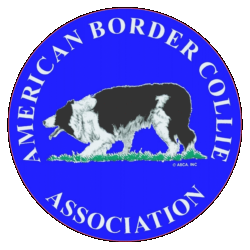About the Border Collie
The Border Collie was developed by the farmers and shepherds of Great Britain to manage and control livestock. The modern Border Collie is the result of three hundred years of breeding for working abilities. They are the most widely employed stockdogs in the world and work sheep, cattle, goats, hogs — even poultry.
Border Collies are intelligent, obedient, eager to please, and easily trained. They have genetic herding abilities, athleticism and tremendous drive. Border Collies instinctively go to the heads of livestock to prevent their escape. This basic heading instinct is the basis for the Border Collie’s renowned gathering ability – rounding up a group of animals and bringing them to the shepherd. Gathering is surely the most useful and common task a dog can help with on the farm. Yet a good work dog can also help with many other tasks. Sorting, driving, holding stock in a corner so the farmer can catch particular animals, or holding stock off feeders so they can be filled.
While a Border Collie may show its instinctive desire to work at a very young age, a dog must be both physically and mentally mature before any serious training on livestock can begin. This is usually between 6 to 12 months of age. Training can take a few months for basic work to two or more years to perfect the abilities needed in stockdog trials. While many Border Collies receive only “on the job” training, some formal training is highly recommended and will yield a much more valuable partner on the farm.
The information on Border Collies provided on the ABCA website is really just an overview. There are many good books and videos available and a wealth of information on the web. The most valuable source of information, however, is from farmers, ranchers, shepherds and stockdog trial folks that have bred, raised, trained and used dogs for 10-20 years or more. Many of these people are ABCA members so contact the ABCA for some names in your area. There are also many regional Border Collie associations and clubs across North America. Become a member of your local club, attend a training clinic, exhibition or a sheep or cattle dog competition to meet the people that know and appreciate these dogs.
See the following pages for introductory information on:
